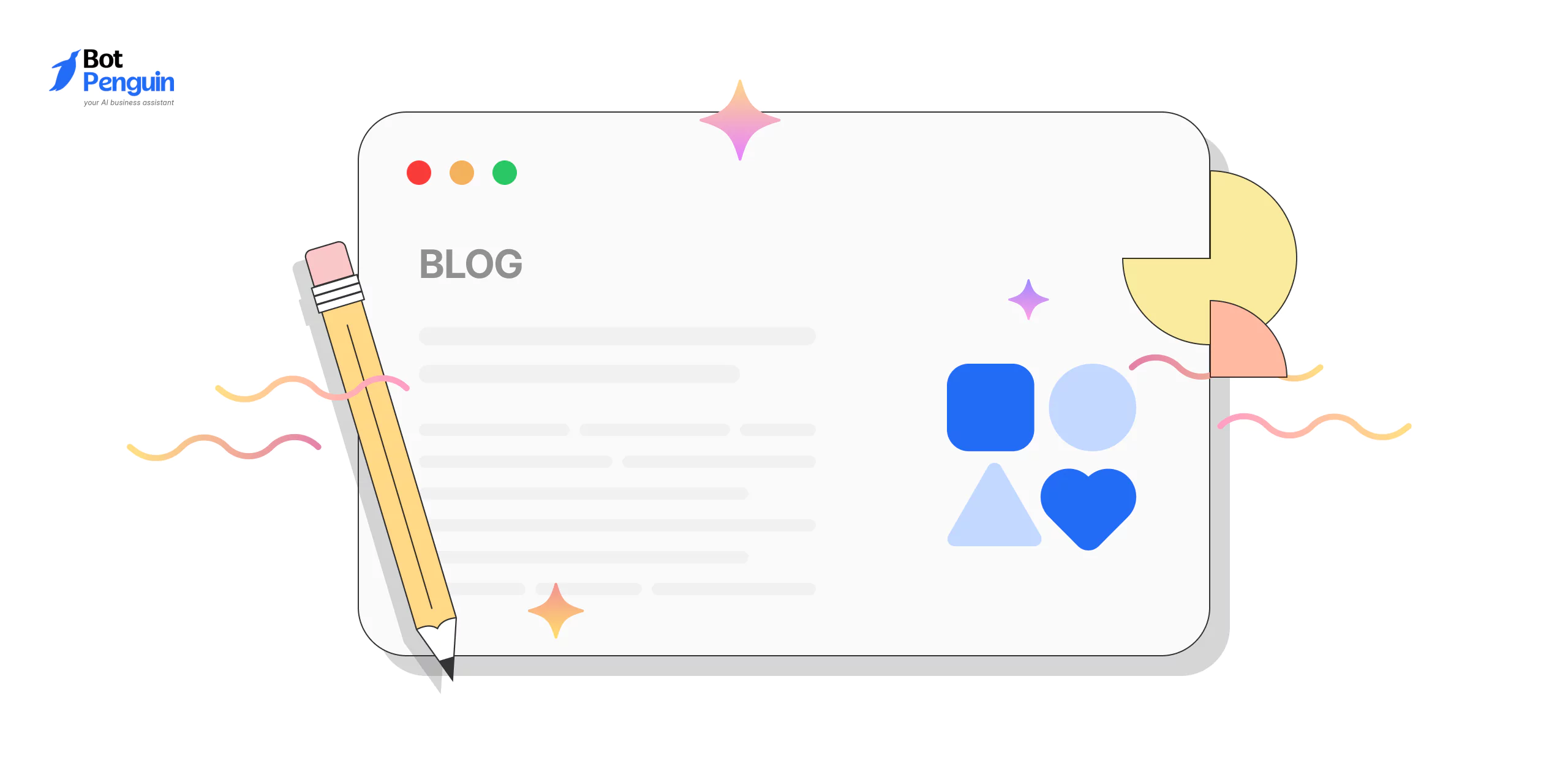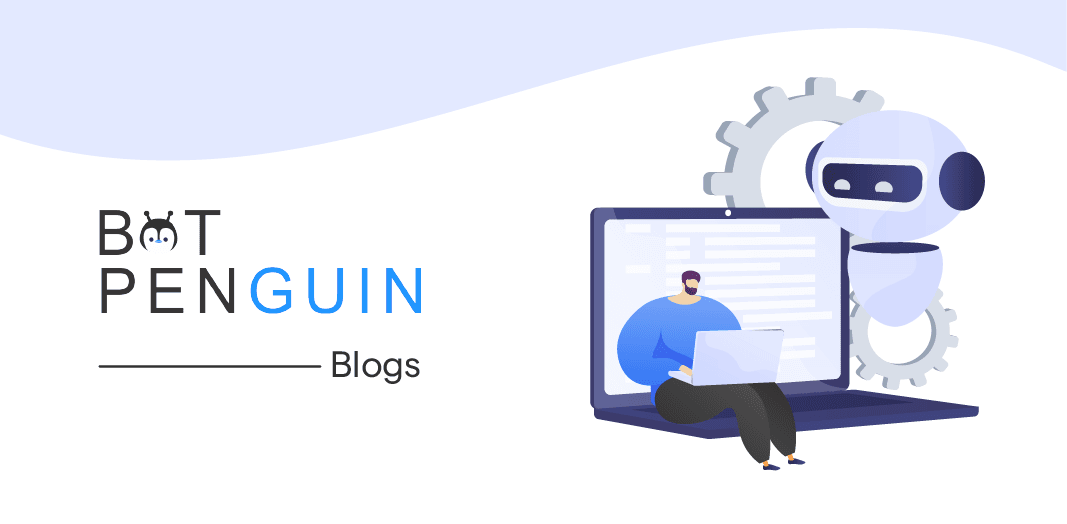Generating leads isn’t the hard part anymore.
With ads, landing pages, and webinars, most businesses are able to capture attention.
The real challenge? Following up with those leads in a way that drives sales.
For example, you host a product launch and get over 300 sign-ups. Great numbers, but within a week, most of them go cold. No replies. No interest. Why? Because the follow-up wasn’t timely, relevant, or consistent.
That’s where lead nurturing automation strategies step in.
They help you stay in touch with every lead at the right time, with the right message, without depending on manual work. These strategies keep your funnel moving even when your team is busy elsewhere.
In this guide, we’ll walk you through:
- How automation can simplify your nurturing process
- Proven strategies to make your lead engagement more effective
What is Lead Nurturing Automation?
Lead nurturing is more than just sending emails. It’s about guiding potential customers through a journey that builds trust and moves them closer to buying.
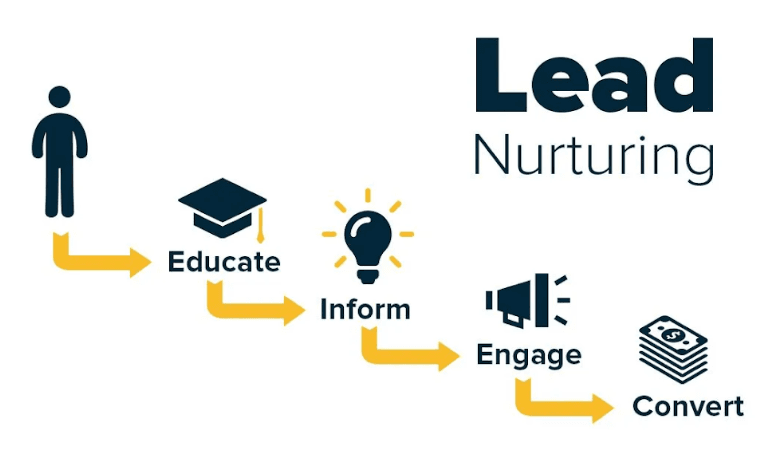
Doing this manually takes too much time and often leads to missed chances. That’s why automating the lead nurturing process is so important today.
Lead nurturing automation uses software to send personalized, timely messages based on a lead’s actions or details.
Instead of following up manually, automation handles repetitive tasks and triggers messages automatically. This keeps leads engaged without extra work from your team.
Tools like marketing automation platforms, CRMs, and chatbots make this possible.
They track what leads do, like visiting a webpage or downloading a guide, and send the right message at the right time.
The goal is to create a smooth, tailored experience that feels personal but runs on autopilot.
Common Lead Nurturing Automation Channels
To keep leads engaged, lead nurturing automation uses various channels and tactics.
Here are the most common ones:
- Drip Campaigns
- Chatbots
- Social Media Retargeting
- CRM Workflows
- SMS and Messaging Apps
Using these channels together creates a multi-step, automated lead nurturing process.
This approach keeps leads interested, builds trust over time, and helps turn prospects into customers — all while saving time and effort.
How Lead Nurturing Automation Benefits Your Business
Automated lead nurturing isn't just a time-saver—it’s a growth tool. The faster you engage with leads, the better your chances of converting them. But speed alone isn’t enough.
You also need consistency, personalization, and a process that scales as your pipeline grows. That’s exactly where lead nurturing automation delivers.
Let’s break down how it works for real businesses.
Faster Lead Conversion and Follow-ups
Speed matters. If a lead doesn't hear from you quickly, they move on.
Take this: A SaaS company offering project management tools gets a demo request through their website.
Instead of waiting for a rep to reply manually, an automated email is triggered immediately, thanking the lead and offering a calendar link for a free walkthrough.
On top of that, a WhatsApp reminder is sent the next day if the booking doesn't happen.
This kind of quick follow-up isn’t just efficient—it keeps momentum going while the lead is still interested. Automated lead nurturing ensures no opportunity sits idle in your CRM. Every trigger—demo, form fill, or sign-up—has an automated response waiting.
Better Lead Scoring and Personalization at Scale
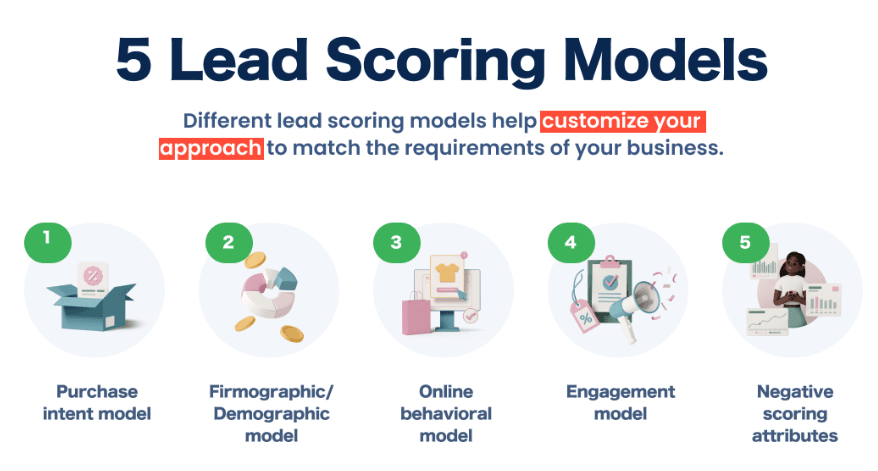
Not all leads are equal, and automation helps you treat them that way.
Imagine an e-commerce marketing agency tracking visitor activity on their service page. One lead downloads a pricing guide, views case studies, and opens every email in a welcome series.
Based on these behaviors, the system automatically raises their score and sends a personalized email offering a strategy session.
You didn’t lift a finger. Yet the lead received relevant content at the right time.
This is what lead nurturing automation unlocks: real-time adjustments based on behavior, allowing you to deliver tailored content at scale. No more guessing. No more blanket messaging.
Reduced Human Error and Improved Consistency
Manual tasks are where most leads fall through the cracks.
Say a coaching business collects leads through Instagram ads. Without automation, the leads need to be exported, tagged, and manually followed up via email. That leaves too much room for error—missed contacts, delays, or even duplicate outreach.
With automated lead nurturing, those Instagram leads are instantly synced to a CRM, added to a segment, and enrolled in a drip campaign. Every touchpoint—email, SMS, even retargeting—is triggered without delay or confusion.
This consistency helps your brand stay reliable, even when your team is small or juggling multiple channels.
In short, lead nurturing automation bridges the gap between interest and action, quickly, consistently, and at scale.
Whether you're booking demos faster, sending smarter content based on behavior, or avoiding the small mistakes that cost big deals, automation keeps your pipeline flowing without constant oversight.
It’s not about replacing the human touch. It’s about ensuring no lead gets left behind, and every interaction counts.
How to Start With Lead Nurturing Automation
Starting with lead nurturing automation doesn’t mean going all-in overnight. It’s a gradual process—one where strategy and simplicity work better than complexity.
You’re not just setting up tools. You’re building a system that speaks to your leads when they’re ready, using content they care about, through the channels they use most. Think of this section as a setup manual—not for the tech, but for the thinking behind it.
Let’s walk through the practical steps to get you started.
Step 1: Define Your Ideal Customer Journey
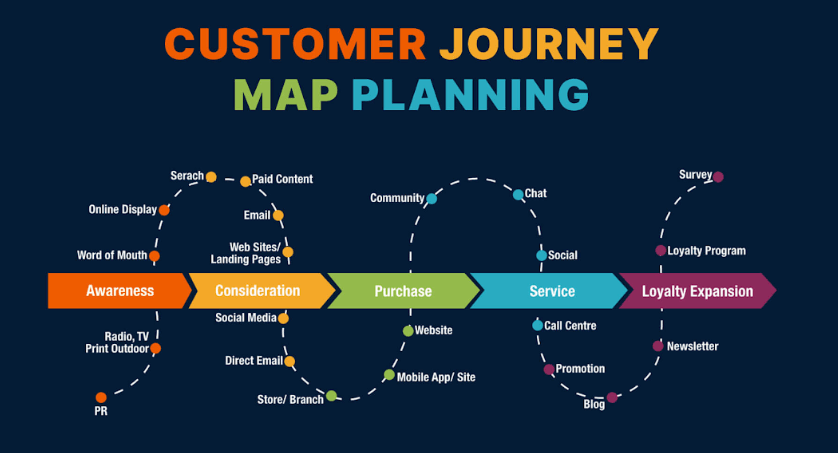
Every automation workflow starts with knowing where your customer is headed.
Say you run an online course platform. Your typical lead might first download a free resource, then attend a live class preview, and finally purchase a full course. Each step is a chance to engage, but only if you know it exists.
Mapping this journey helps you see what messages need to be sent, when, and why. This isn’t about cramming in more content. It’s about placing the right prompt at the right time. Automation only works well when it reflects actual lead behavior.
Without this step, automation risks becoming noise. With it, you build trust, not just touchpoints.
Step 2: Segment Your Leads for Personalization
If you're sending the same emails to every lead, you're not nurturing—you're broadcasting.
Imagine a health tech startup that serves both individual users and clinics. Their needs, budgets, and buying cycles are different.
With segmentation, you tag each lead based on signup form data, behavior, or referral source. Now, your automation can deliver content relevant to their unique situation.
Segmentation helps you personalize at scale. It ensures that each lead gets messages that speak to their current stage and context. This is especially powerful in automated lead nurturing, where you don’t want to guess what works—you want to tailor what matters.
Smart segmentation turns one-size-fits-all into one-size-fits-right.
Step 3: Choose the Right Lead Nurturing Tools
The right lead nurturing tool won’t just automate—it will simplify, centralize, and scale.
For example, a growing eCommerce brand might use Klaviyo for emails, Zapier for cross-tool triggers, and a chatbot for real-time responses. What matters is choosing platforms that talk to each other, adapt to your lead volumes, and offer flexibility in building workflows.
You don’t need an expensive all-in-one system to start. You need one that aligns with your business and supports your lead nurturing automation strategies. That includes support for segmentation, behavior-based triggers, and multichannel reach.
Pick your tools wisely. They’re the engine behind your automation success.
Step 4: Create Targeted Content for Each Stage
Great automation falls flat without great content.
Let’s say a D2C skincare brand wants to nurture leads after they take a skin quiz. A welcome email explaining product matches work at stage one. A follow-up with a before-and-after case study deepens trust. A limited-time discount nudges them closer to purchase.
Each of these pieces serves a moment in the journey. You don’t need long guides or complex campaigns—just content that fits the stage and answers the lead’s next question.
Build this content in advance so your automation doesn’t stall when it needs to engage.
Targeted content is your digital salesperson—always available, always relevant.
Step 5: Set Up Automated Workflows and Triggers
Now that your journey is mapped and your content is ready, it’s time to connect the dots.
Use triggers like time delays, form completions, page visits, or cart abandonments. Say a lead signs up for a webinar—your automation can instantly send a confirmation, follow up with key takeaways, and offer a relevant product demo 3 days later.
Workflows let you do this without lifting a finger. The key is to think of them as conversations, not campaigns. Each action from the lead invites a response from your system.
This is where lead nurturing automation becomes real, not just planned, but working.
Step 6: Monitor, Optimize, and Improve Continuously
No system is set-and-forget.
Maybe your open rate on the welcome email is low. Or your free trial users drop off before seeing the value. These are signs your automation needs tuning. Use metrics like CTRs, bounce rates, or engagement drop-offs to pinpoint gaps.
A fitness coaching business, for example, might test two subject lines for a “meal prep tips” email to see which drives more clicks. This feedback helps shape future flows, one tweak at a time.
Think of this step as ongoing maintenance. Optimization ensures your workflows stay sharp, helpful, and aligned with how your audience behaves now, not six months ago.
Starting small with lead nurturing automation pays off.
Each step—whether it's defining your buyer journey or creating tailored workflows—helps you connect better and convert faster. When done right, automation isn’t just a time-saver; it’s a game-changer for growing leads into loyal customers.
Now that your foundation is ready, it’s time to explore which platforms work best and how to use them smartly.
Top Lead Nurturing Automation Strategies That Work
When it comes to lead-nurturing automation, using the right strategies makes all the difference.
Instead of sending generic messages, your campaigns should react to what each lead does. This keeps your communication relevant, timely, and more effective.
In the following sections, we’ll break down key lead-nurturing automation strategies you can apply across different channels to get the best results.
1. Run Drip Campaigns That React to Lead Actions
Drip campaigns that change based on what leads do are a powerful lead nurturing automation strategy.
Automation tools track actions like clicks, downloads, or page visits, and then automatically send the right message at the right time. This creates a personal touch without extra manual work.
Here’s how to automate key parts of this strategy:
Send emails, texts, or DMs when someone takes an action
Set up your system to trigger immediate follow-ups.
For example, if a lead downloads an ebook, your automation tool can instantly send a thank-you email or a related offer via text or social media DM.
This keeps the lead engaged and moves them closer to a sale.
Use if-this-then-that rules to change what content they get
Automation platforms let you build “if this happens, then do that” rules.
If a lead watches a product demo, send a case study next. If they don’t act further, send a reminder or FAQ content.
This way, each lead’s journey feels tailored and relevant.
Adjust timing and messages based on lead interest
Leads at the start of the funnel get spaced-out, educational emails to build trust. Leads closer to buying receive faster, more direct offers.
Automation manages these timing rules, so you don’t have to track each lead manually.
Make sure all channels work together smoothly
Automation helps coordinate messages across email, SMS, social media, and chat.
When all channels sync, leads get a consistent experience no matter how they interact.
This removes confusion and builds stronger connections.
2. Use Chatbots to Guide and Follow Up with Leads Automatically
Chatbots are now central to lead nurturing automation strategies.
They can handle conversations round-the-clock, respond instantly, and ensure no lead gets ignored.
Whether you're in SaaS, ecommerce, or real estate, chatbots help speed up qualification, automate follow-ups, and connect your tools behind the scenes.
Here’s how you can use chatbots effectively, along with quick scenarios:
Connect the chatbot to your email or CRM tools
A lead-gen firm uses a chatbot to collect contact details and interests. Once the chat ends, all the data — name, company size, service interests — flows directly into their CRM and email tool.
This integration means the chatbot doesn’t just start the conversation but hands off everything neatly to tools like HubSpot or Mailchimp.
The lead instantly begins receiving the right nurture emails, while the sales team can track interactions without any manual data entry.
Set up questions that help qualify leads right away
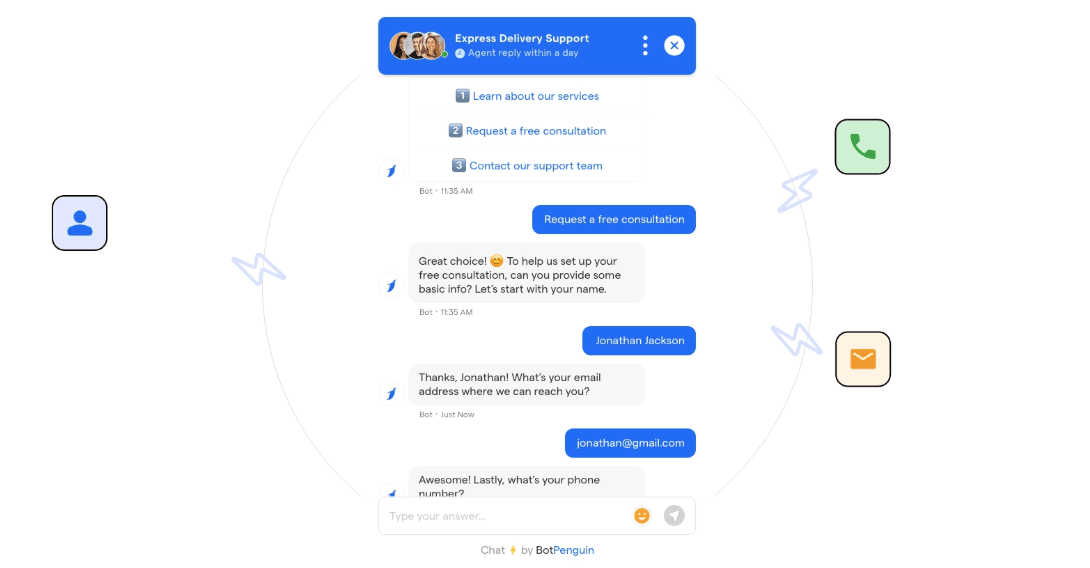
Imagine a project management SaaS startup with a chatbot on its homepage. As soon as a visitor engages, the bot asks, “What’s the size of your team?” and “What tools are you currently using?”
Based on these responses, it can immediately understand whether the visitor is a freelancer, a small team, or an enterprise buyer.
This early qualification helps the system push leads into more tailored automation sequences, like offering a free trial for small teams or booking a demo for larger ones.
It saves time for both the seller and the lead.
Sort leads based on how they reply to the bot
Now picture a cloud storage platform that caters to individuals, startups, and large businesses. A chatbot on their pricing page asks whether users are looking for personal use or business storage.
Those who select “business” are tagged in the CRM as high-value leads and automatically enrolled in an email sequence offering enterprise-level benefits and onboarding calls. Meanwhile, individual users get routed into a shorter welcome journey focused on app tips.
All this happens automatically, ensuring that every lead receives the right messaging from the start.
Send follow-up messages after a chatbot chat ends
A digital marketing agency embeds a chatbot on its service inquiry page.
After a user finishes chatting — let’s say they asked about SEO packages but didn’t fill out the contact form — the system waits an hour and then sends a friendly email or WhatsApp message saying, “Still thinking about SEO help? Here’s a quick checklist to get started.”
This follow-up is automated but feels timely and relevant, giving the user a nudge without being pushy.
It also boosts the chances of conversion from lukewarm leads.
Using chatbots this way makes lead qualification faster and keeps leads engaged consistently.
3. Set Up CRM Rules to Move Leads Through the Funnel
Once your chatbot qualifies and follows up with leads, the next step is making sure your CRM knows what to do with those leads next, without manual input.
This is where automation through CRM rules comes into play.
When done right, it ensures leads keep moving through the funnel based on real actions and signals, not guesswork. Whether someone clicks on a pricing page or just downloads a guide, you can trigger the right next step without anyone lifting a finger.
This is the core of how lead-nurturing automation strategies work at scale — leads move when they’re ready, and the system responds instantly.
Here’s how you can use CRM rules to handle that:
Move leads ahead when they hit certain scores or actions
Say you run a legal consultation service for startups. A lead views three blogs, opens all your emails, and spends five minutes on your services page.
With a CRM scoring rule in place, once they reach a score threshold — say 75 points — they automatically move from “Top of Funnel” to “Sales Ready.” From here, the system can trigger a sales rep notification or even send a demo booking link.
It removes the delay between intent and action.
Assign leads to the right team automatically
A B2B SaaS company serving multiple industries might want financial leads handled by one team and healthcare leads by another.
Based on how leads answer chatbot questions or which landing page they signed up from, CRM rules can instantly assign them to the right internal team — no spreadsheets, no back-and-forth.
It ensures leads get expertise-specific handling from the very first contact.
Send helpful content when leads are ready for it
A digital product studio may offer guides on UX, design sprints, and product strategy.
Once a lead visits the “design sprint” service page twice, CRM rules can trigger a curated email with their best resources on that topic — no one has to send it manually.
This keeps the lead engaged and informed, without bombarding them with irrelevant content.
Put cold leads back into new campaigns later
Some leads stop opening emails or never schedule that demo.
Instead of leaving them untouched, CRM automation can detect inactivity and loop them into a re-engagement sequence after 30 days, maybe with a new offer or case study.
You don’t lose them. You just reset their journey and gave them a second nudge.
3. Send Personalized Texts and WhatsApp Messages Automatically
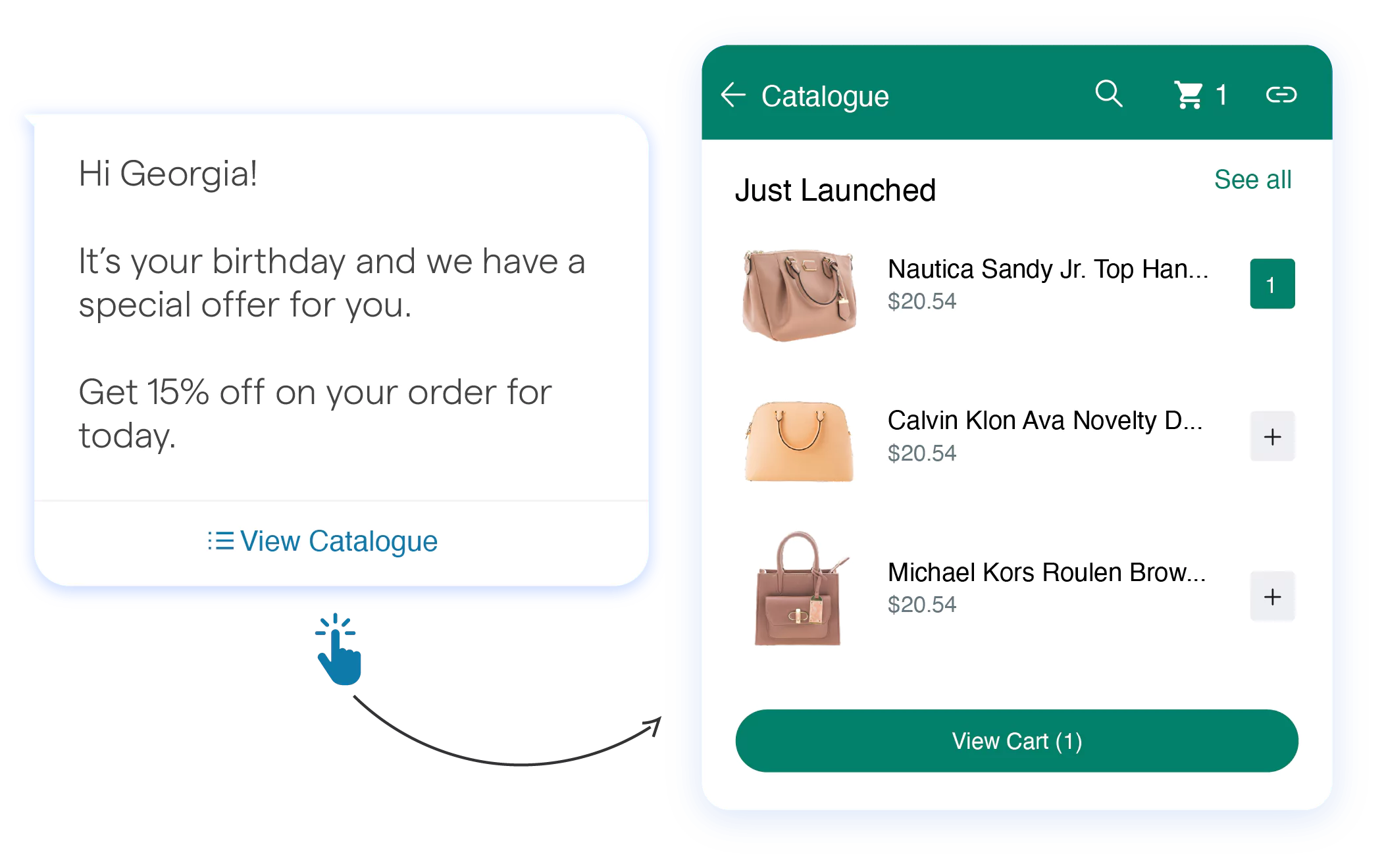
Not every lead responds to email. Some prefer real-time, mobile-friendly communication.
This is where automated messaging on platforms like SMS and WhatsApp becomes a powerful part of your lead-nurturing strategy.
When messages are timely, personal, and sent on the right channel, leads are more likely to engage and convert.
Using the right lead nurturing automation strategies, you can trigger texts or WhatsApp messages based on lead behavior, preferences, or stage in the funnel. These aren’t bulk messages. They’re dynamic, personalized, and connected to your CRM and chatbot flows.
Let’s break it down.
Start message flows when someone signs up or fills out a form
Imagine a lead signs up on your landing page for a free eBook.
Instead of waiting hours for a follow-up email, you can instantly send a WhatsApp message: “Hey Alex! Thanks for downloading our guide. Let us know if you have any questions — we’re here to help!”
This kind of instant messaging boosts engagement and creates a more personal first impression.
While chatbots are built for this kind of speed, one like the BotPenguin makes this especially easy with its form-based trigger automation.
You can connect your lead capture forms directly to a chatbot flow, so as soon as someone signs up, a personalized message goes out without delay.
Add names and other details using saved info
A simple “Hi” doesn’t cut it.
But “Hi Priya, saw you checked out our pricing page — here’s a quick walkthrough video” feels personal.
With CRM integration, you can auto-fill names, company names, service interests, or any custom field into your text or WhatsApp message.
It builds trust and increases response rates — without writing a single manual message.
Time messages based on when the lead is most active
Sending a message at 2 a.m.? Likely to be ignored.
Automation lets you schedule messages for the best response time.
For example, if a lead usually clicks your emails at 10 a.m., your next WhatsApp reminder can go out at that same time.
Some platforms track lead behavior and help you send messages when they’re most likely to be online.
Keep contacts synced between chat apps and your CRM
If your CRM doesn’t know what you said on WhatsApp, your funnel falls apart.
Automated syncing ensures every contact update, message thread, or interaction is logged in your CRM.
This way, when your sales rep follows up, they already know what was sent and how the lead responded.
4. Set Up Social Media Follow-Ups Without Manual Work
In today’s fast-moving digital world, staying connected with your social media leads is key.
But manually tracking every comment, click, or message can quickly become overwhelming. That’s where automation steps in.
With lead-nurturing automation, you can engage and follow up with your social media audience automatically. This ensures no lead slips through the cracks, while your team saves time to focus on bigger tasks.
Let’s explore practical ways to automate your social media follow-ups and keep leads moving through the funnel smoothly.
Show Ads Again to People Who Visited or Clicked
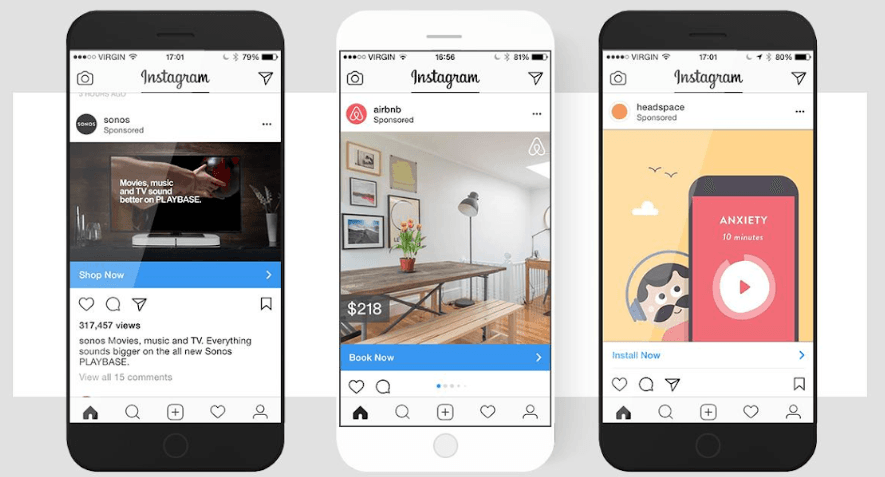
Retargeting ads are a powerful way to re-engage leads who have already shown interest.
For example, if someone clicks on your Facebook post or visits your landing page, automated ad platforms can display relevant ads to them later.
This keeps your brand top-of-mind and encourages action.
Using automation tools, you can set up these campaigns to run continuously, freeing you from manually updating ad lists.
Auto-Reply to Comments or Messages with Helpful Info
Manually responding to every comment or message can be draining.
Automation allows you to set up instant replies that deliver helpful answers or direct people to resources.
Imagine a chatbot instantly responding to questions about your product on Instagram DMs or Facebook comments.
This keeps engagement high and speeds up lead nurturing, ensuring your audience feels heard and supported around the clock.
Share Lead Magnets After Someone Engages with a Post
When a lead interacts with your content, that’s a perfect moment to offer a lead magnet like a free ebook or webinar invite.
Automation lets you trigger these offers immediately after engagement, such as after a comment or reaction.
This timely delivery increases the chance of capturing their information and nurturing them further.
Add Social Leads to Chatbot or Email Lists Instantly
Manually transferring social media leads into your CRM or email platform wastes time and risks errors.
Automation tools can instantly add new leads from social platforms to your chatbot sequences or email lists.
This keeps your nurturing consistent and efficient, so leads receive the right follow-ups without delay.
Lead Nurturing Automation Strategies: Mistakes to Avoid
Automating your lead nurturing can save time and boost conversions. But it’s easy to fall into traps that slow you down or hurt your results.
Many marketers rush into automation without fully thinking through the potential pitfalls. The best lead-nurturing automation strategies balance efficiency with personalization and accuracy.
In this section, we’ll highlight two common mistakes to avoid. Knowing these can help you create smarter, more effective automation workflows that work well for both your team and your leads.
Over-Automation Without Human Oversight
Automation should speed up your processes, not replace human connection entirely. One major mistake is letting automation run on autopilot without checks from your team.
Leads may receive robotic responses or irrelevant messages that hurt trust and engagement.
Imagine a chatbot sending generic answers to complex questions, or drip campaigns that fail to adjust to a lead’s real-time behavior. This can frustrate potential customers and push them away.
The key is to blend automation with thoughtful human oversight. Use automation for repetitive tasks, but keep your team ready to jump in when personalized attention is needed. That balance keeps your lead nurturing smooth and genuinely helpful.
Ignoring Data Quality and Integration Gaps
Your automation is only as good as the data it relies on. Poor data quality and disconnected systems can cause leads to get missed, duplicated, or wrongly scored. This leads to ineffective follow-ups and wasted effort.
For example, if your CRM isn’t synced properly with your chatbot or email platform, leads may fall through the cracks or get bombarded with conflicting messages.
Regularly audit your data and ensure all tools integrate seamlessly. Clean, up-to-date information helps your automation deliver relevant content and keep your lead funnel healthy.
Conclusion: Scale Smarter With Lead Nurturing Automation Tools
Throughout this guide, we’ve explored practical ways to set up smart workflows, but no matter how advanced your lead nurturing automation strategies are, the tools you use make all the difference.
Thankfully, the market is full of automation platforms built specifically for nurturing leads. Tools like HubSpot, Mailchimp, ActiveCampaign, and Zapier allow you to build sequences, segment audiences, and trigger personalized actions across channels.
You can schedule emails, automate replies, and even sync contact lists across platforms without too much manual input. For teams looking to scale, they offer a great starting point.
But here’s where the gap starts to show.
Most of these platforms aren’t built for real-time, conversational experiences. They rely heavily on form submissions, email sequences, or delayed workflows, sometimes making interactions feel static or impersonal.
And when it comes to syncing everything across live chat, social DMs, email, and CRM pipelines, the setup can get complicated. Without the right orchestration, leads might still get stuck or missed.
That’s why your lead nurturing automation strategies need more than just drag-and-drop tools. They need platforms that go beyond scheduled responses and instead adapt based on how your leads engage.
In the next section, we’ll take a closer look at BotPenguin - a tool that solves these challenges head-on by blending chatbot intelligence, multi-channel automation, and CRM syncing—all under one roof.
BotPenguin’s Role in Lead Nurturing Automation
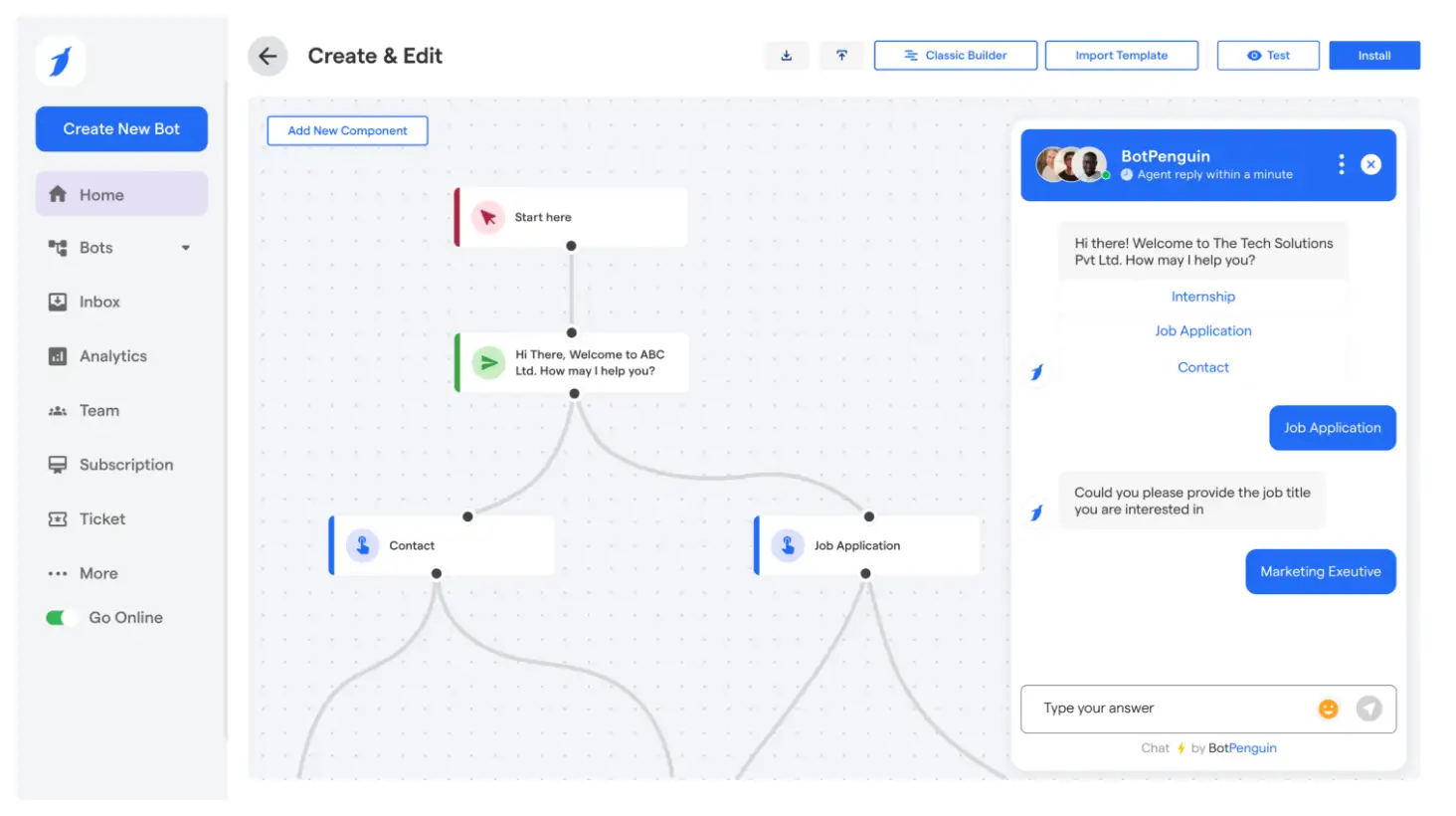
Most lead nurturing automation tools do well with follow-ups but struggle with first-touch engagement. This is where BotPenguin fits in, bridging the gap between lead capture and nurture without adding complexity.
Here’s how BotPenguin strengthens your lead nurturing automation strategy:
- Captures leads through AI-powered chat: Engages visitors instantly on websites, WhatsApp, and Messenger, so you're not limited to static forms.
- Instantly qualifies visitors via conversational flows: Asks smart, contextual questions to segment leads in real time—like qualifying a 2 AM product demo request before it even hits your inbox.
- Shares relevant resources or lead magnets: Sends targeted PDFs, offers, or guides based on user responses to keep them engaged from the first interaction.
- Pushes qualified lead data directly to your CRM or email tool: Tags and transfers leads into tools like ActiveCampaign, HubSpot, or Zoho, ready for workflows without manual input.
- Sends personalized follow-ups on user-preferred channels: WhatsApp or Messenger-based nudges feel natural, often getting faster replies than traditional emails.
- Re-engages cold leads mid-funnel: Uses chatbot reminders or updates to revive interest, outperforming many email-only re-engagement tactics.
All of this happens without needing a developer or a complex setup.
BotPenguin’s no-code platform lets you build smart chatbot workflows in minutes, fully integrated with your existing tools.
So, if you’re looking to improve your lead nurturing automation strategies, BotPenguin is a smart, low-risk way to get started.
No credit card is required, and it’s simple enough for non-technical teams to use right away.
Frequently Asked Questions (FAQs)
How do automated lead nurturing strategies improve conversions?
Automated nurturing ensures consistent communication, timely responses, and tailored content.
This builds trust and keeps your brand top-of-mind, helping move leads faster through the funnel toward conversion without manual intervention.
What channels can be automated for lead nurturing?
Email, SMS, website chat, WhatsApp, Messenger, and in-app messaging can all be automated. Multi-channel automation increases engagement by reaching leads on their preferred platforms.
Can small businesses benefit from lead-nurturing automation?
Yes. Automation helps small businesses scale communication, save time, and maintain consistency in follow-ups, even with lean teams and limited resources.
What content works best in automated lead nurturing?
Personalized emails, lead magnets, product demos, educational resources, and follow-up messages tailored to lead behavior or interests perform best in nurturing sequences.
How often should you follow up with leads?
Follow-up frequency depends on your sales cycle, but typically ranges from every few days to weekly. Automation helps manage timing without overwhelming leads.
What’s the role of chatbots in lead-nurturing automation?
Chatbots qualify leads, answer queries instantly, share resources, and trigger CRM workflows—making them vital in capturing and engaging prospects early in the funnel.
How do you measure the success of lead nurturing automation?
Track metrics like open and click rates, conversion rates, lead-to-customer time, and engagement across channels. Tools with built-in analytics help monitor and optimize performance.

